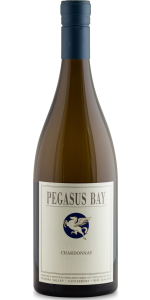
Description
On release the colour is bright lemon. A rich tapestry of aromas rises to satiate the nose, rock melon, nectarine, and mandarin spray at the fore, interwoven with hints of buttered popcorn, flinty gun smoke, vanilla pod, and a whisper of vegemite. The palate is full bodied yet precise, with a creamy textured mouthfeel balanced by a shaft of invigorating acidity that gives focus and drive. Elegant with underlying power and structure, building towards a long, beguiling close.
Awards
94 pts James Suckling
92 pts Vinous by Antonio Galloni
95 pts Wine Orbit
Certifications
Alcohol
13.0%
Analytical data
dry
Vineyard
The vineyard is located within the Waipara Valley of North Canterbury, on free draining, north facing terraces carved out of New Zealand’s Southern Alps by an ice-age glacier. It benefits from being in the lee of the Teviotdale Range, giving maximum protection from the Pacific’s easterly breezes and thus creating a unique mesoclimate. The vines are over 30 years old, with a large proportion planted on their own roots. The soil is free draining and of low fertility, resulting in naturally reduced vine vigour. This produces low yields of optimally ripened, high quality, flavourful grapes, which fully express the qualities of this unique terroir. The vineyard has warm days, but the nights are amongst the coolest in the Waipara Valley, drawing out the ripening period of the grapes, while still retaining good natural acidity.
Winemaker
Mat Donaldson
Viticulture
The vines are over 30 years old, with a large proportion planted on their own roots.
Vinification
We use traditional Burgundian winemaking methods. The fruit was hand-picked in stages during early April and then the whole bunches gently pressed. The non-clarified juice was then put into large French oak barrels (puncheons), 70% of which were old in order to limit pickup of oak flavour. In these it underwent primary fermentation by the grapes indigenous yeasts. The wine was then matured in the puncheons on its natural deposits of yeast lees (sur lie). In the summer after harvest it started to go through spontaneous secondary (malolactic) fermentation. It was regularly tasted during this time and the fermentation was stopped when the ideal balance was obtained. It had approximately 12 months maturation prior to bottling.
Maturation
12 months
